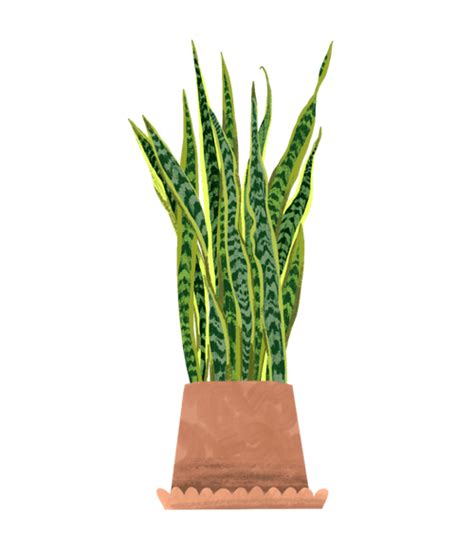If you’re a plant parent, you may have experienced the frustration of a dying snake plant. The good news is that most issues with these plants are easily fixable. The most common culprits behind a dying snake plant include fungal and insect problems, root rot, and exposure to extreme temperature changes. With some simple troubleshooting, you can identify the problem and take steps to nurse your snake plant back to health.
Why is my snake plant dying suddenly?
Overwatering and slow draining soils are the most common reasons for a dying snake plant. These conditions can cause the leaves to turn yellow or brown and droop, giving the plant a dying appearance. It’s important to note that snake plants are not cold-tolerant and can die if exposed to temperatures lower than 50°F. To keep your snake plant healthy, make sure to water it sparingly and use well-draining soil.
Additionally, keep it in a warm and well-lit area to ensure optimal growth.
How often should you water snake plant?
When it comes to watering your Snake Plant, less is more. In fact, you only need to water it every two weeks, making sure that the soil has completely dried out before doing so. Overwatering can lead to root rot, so it’s important to be mindful of how much water you’re giving your plant. During the winter months, you can even cut back to watering once a month if the soil is still moist after two weeks.
By following these simple watering guidelines, you can help ensure the health and longevity of your Snake Plant.
How do you save a damaged snake plant?
If your snake plant is damaged, there are a few steps you can take to save it. First, identify the cause of the damage. If it’s due to overwatering, stop watering the plant and let the soil dry out completely before watering again. If the damage is due to pests, treat the plant with an insecticide.
If the leaves are yellowing or wilting, trim them off to encourage new growth. Repot the plant in fresh soil if the roots are damaged or if the plant has outgrown its current pot. Finally, make sure the plant is getting the right amount of light and temperature for its needs. With proper care, your snake plant should recover and thrive.
Do snake plants grow back?
If you notice that your snake plant is starting to look a bit worse for wear, don’t worry! There’s a simple solution to restore its beauty. All you need to do is prune off any leaves that are looking unsightly, and with proper care, new leaves will soon grow in their place. By taking good care of your snake plant, you can ensure that it stays healthy and vibrant for years to come.
What is the lifespan of snake plant?
It’s fascinating to learn that snake plants can live for up to a decade, and with the right care, some can even survive for 25 years! These plants are known for their resilience and ability to thrive in low-light conditions, making them a popular choice for indoor spaces. With their air-purifying properties, snake plants are not only aesthetically pleasing but also beneficial for our health. It’s important to note that proper care, such as avoiding overwatering and providing adequate drainage, is crucial for the longevity of these plants.
Will a snake plant repair itself?
Regrettably, if your snake plant’s leaves have been broken, cracked, or split, they will not be able to heal, and the physical damage will remain. However, you can take measures to prevent further harm from occurring in the future.
How do you nurse a snake plant back to life?
If you have a snake plant with yellow leaves, don’t worry! There are ways to revive it. One solution is to move the plant to a spot with bright indirect light and water it more regularly. If the yellow leaves are due to lack of light or too much direct sunlight, it’s best to transfer the plant to a new location where it can receive more light without being directly exposed to the sun. By taking these steps, you can help your snake plant thrive and regain its healthy green color.
How do you restart a snake plant?
“`To propagate a new plant, start by selecting a mature-sized leaf from an established plant. Cut the leaf off and place the cut end in a jar or vase filled with a few inches of water. It’s important to keep the jar in a bright spot and change the water, rinsing out the jar, once a week. After about two months, roots should begin to form at the base of the cutting, allowing you to grow a new plant from the original one.
“`
How many days can a snake plant go without water?
If you’re looking for a low-maintenance plant that won’t add to your stress levels, consider the sansevieria. Also known as snake plants or mother-in-law’s tongues, these plants are the opposite of high-maintenance. Unlike some plants that require constant attention, sansevierias are incredibly resilient and can survive for up to two weeks without water. So if you’re someone who tends to forget about your plants or doesn’t have a lot of time to devote to their care, a sansevieria might be the perfect addition to your home or office.
How do I know my snake plant is dying?
There are a few signs that your snake plant may be dying. The first is yellowing leaves, which can indicate overwatering or underwatering. If the leaves are mushy or soft, this could also be a sign of overwatering. On the other hand, if the leaves are dry and brittle, this could indicate underwatering.
Another sign of a dying snake plant is wilting or drooping leaves. This can be caused by a lack of water or too much direct sunlight. Finally, if you notice any brown or black spots on the leaves, this could be a sign of disease or pest infestation. If you suspect your snake plant is dying, it’s important to take action quickly to try to save it.
How hard is it to keep a snake plant alive?
If you’re looking for a low-maintenance house plant that can survive in almost any condition, the snake plant is a great option. This plant is known for its resilience and ability to thrive in low light environments with infrequent watering. However, it’s important to note that overwatering can actually be detrimental to the plant’s health and cause root rot. Due to its hardiness, the snake plant is a popular choice for both homes and offices.
What does an underwatered snake plant look like?
If you notice any holes, discoloration, or dark spots on your snake plant’s leaves, it may be an indication that the plant is not getting enough water. This is a common problem that occurs when the soil is left dry for an extended period of time, causing the plant to wither and parts of it to die off. To prevent this from happening, make sure to water your snake plant regularly and keep the soil moist but not waterlogged.
Can a snake plant come back from overwatering?
One of the most prevalent issues that snake plant owners face is root rot, which can lead to the growth of harmful fungi and bacteria. However, due to their resilient nature, snake plants are capable of bouncing back from overwatering and other stressors. It’s important to keep an eye on the soil moisture levels and avoid overwatering to prevent root rot from occurring in the first place.
What is the proper way to water a snake plant?
The proper way to water a snake plant is to allow the soil to dry out completely between waterings. Overwatering can lead to root rot and other issues. When watering, pour water directly onto the soil and avoid getting water on the leaves. It’s also important to use well-draining soil and a pot with drainage holes to prevent water from sitting in the bottom of the pot.
Snake plants are drought-tolerant and can go several weeks without water, making them a low-maintenance plant option. It’s better to underwater than overwater a snake plant, as they are more likely to recover from underwatering than from overwatering.
Is it better to bottom water snake plants?
When it comes to caring for your plants, it’s important to water them properly. If possible, water from the bottom of the pot to encourage the roots to grow downward and establish a strong foundation for the plant. This is especially important for plants with thick, tall leaves that need extra support. During the winter months, when the plant is not actively growing, it’s best to water less frequently than you would in the spring and summer.
By following these watering tips, you can help your plants thrive and stay healthy all year round.
How do I get my snake plant to grow back?
“`Propagating snake plants through cuttings is a simple process that involves submerging a mature leaf in a jar of clean water. To start, select a fully grown leaf from a healthy plant and cut it off. Next, place the cut end of the leaf in a jar or vase filled with a few inches of water. It’s important to keep the jar in a well-lit area and change the water, along with rinsing the jar, once a week.
With these easy steps, you can successfully grow new snake plants from cuttings.“`
Will a broken snake plant grow back?
If you have a Snake Plant with damaged leaves, don’t worry! While the leaves themselves cannot heal, there is a way to salvage them. By cutting off the damaged leaves and replanting them, you can actually grow new plants. This is a great way to propagate your Snake Plant and create more greenery in your home. Plus, it’s a fun and rewarding project to take on.
So, don’t throw away those damaged leaves just yet – give them a chance to grow into something beautiful.
Will snake plants come back after winter?
If you notice that your Snake plant’s leaves are curling, don’t worry! With proper care, your plant can recover within a month or so. The key is to prevent the damage from reaching the roots. Once the roots are safe, the leaves will straighten out and new growth will emerge in the spring. So, be patient and give your Snake plant the care it needs to thrive.
Will snake plant leaves recover after going yellow?
If you notice that your snake plant has yellow leaves, it’s important to identify the root cause of the issue as soon as possible to prevent further damage. Unfortunately, even if you successfully address the underlying problem, the yellow leaves will not turn green again. To keep your plant healthy, it’s best to use sharp and sanitized pruners or scissors to cut off the affected leaves at the base of the plant. This will not only improve the plant’s appearance, but it will also allow it to focus its energy on producing new, healthy leaves.
Related Article
- Why Did My Silicone Ring Shrink?
- Why Did My Salt Block Explode?
- Why Did My Rose Quartz Break?
- Why Did My Phone Randomly Vibrate?
- Why Did My Pending Deposit Disappear?
- Why Did My Parakeet Suddenly Die?
- Why Did My Opal Turn Yellow?
- Why Did My Mom Leave Me?
- Why Did My Instagram Highlights Disappear?
- Why Did My Hematite Ring Break?


